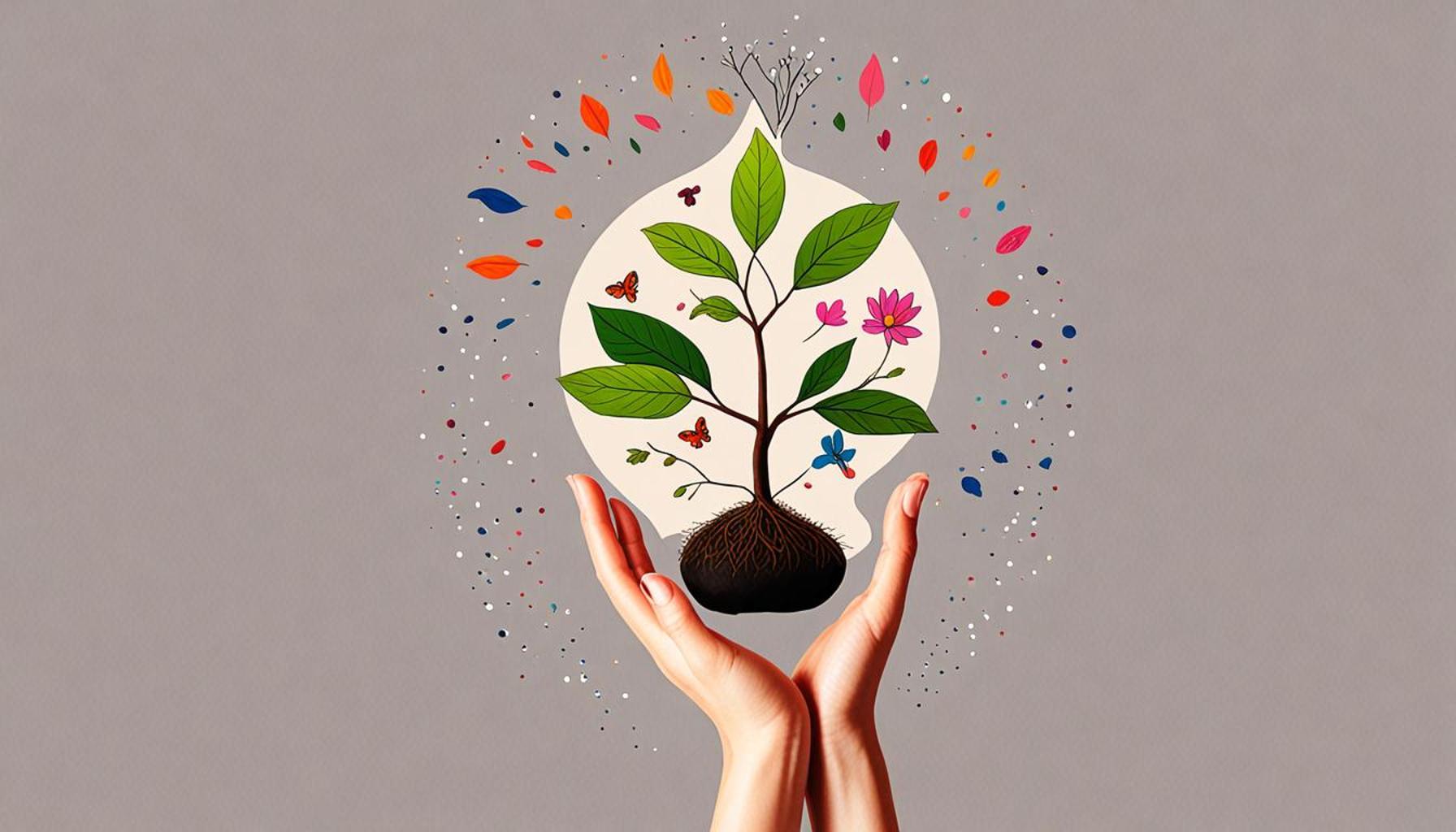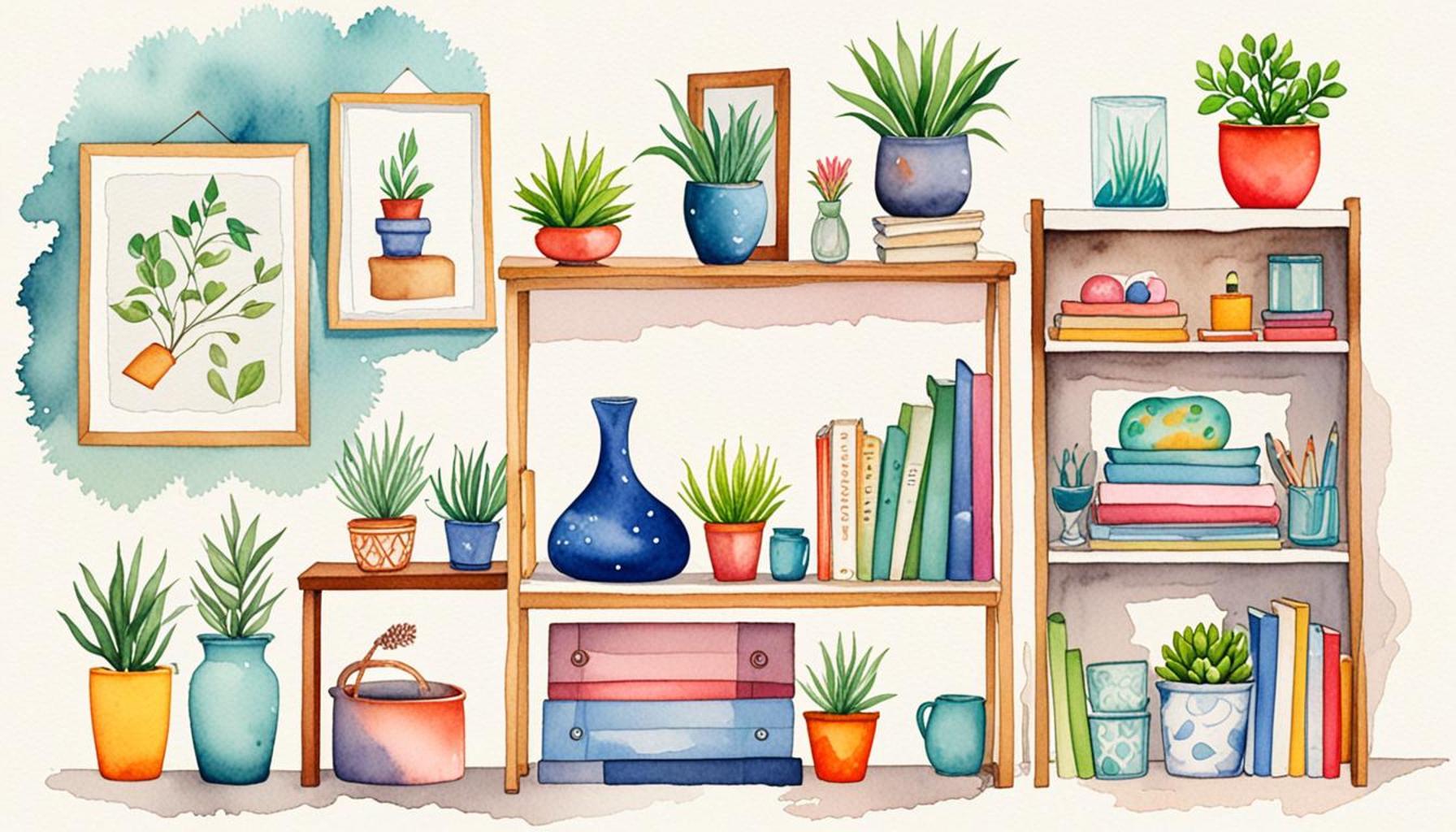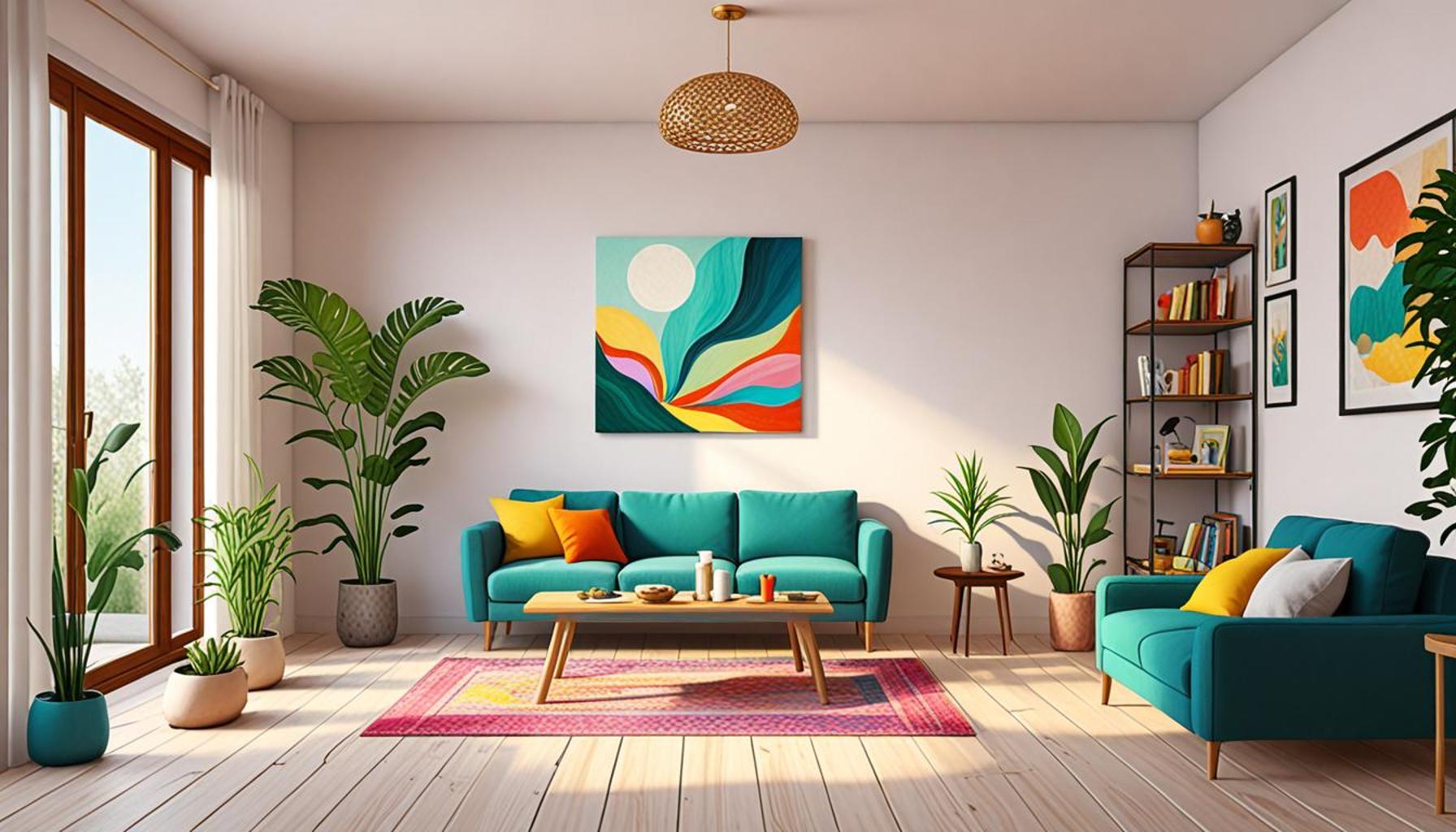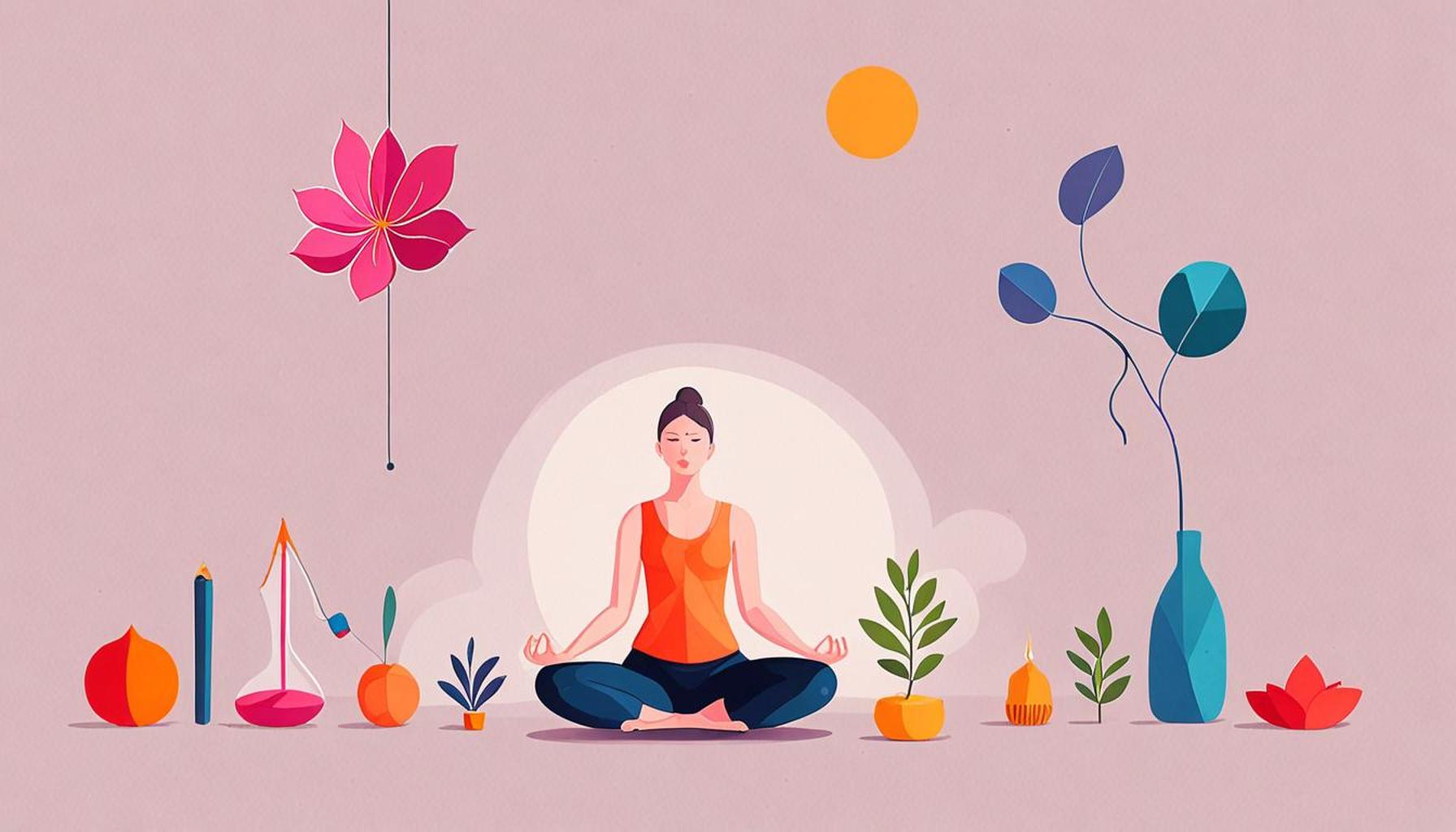Mindful Living and the Art of Letting Go: Cultivating a Minimalist Life with Intention

Discovering Mindful Living
In a world overflowing with distractions and consumerism, many are searching for a breath of fresh air. Mindful living, intertwined with the art of letting go, offers an intriguing path toward a simpler, more intentional existence. This lifestyle invites individuals to consciously curate their environments and emotional landscapes, fostering a deeper connection to both themselves and the world around them.
The Essentials of Mindful Living
- Awareness: Engaging fully with the present moment is the cornerstone of mindful living. This means not just being physically present but also mentally and emotionally engaged. For instance, when eating, savor each bite, noticing the flavors, textures, and sensations, rather than hurriedly consuming your meal. Meditation practices, such as focusing on breath or sensations, can heighten this awareness.
- Intentionality: Making choices that align with personal values leads to greater satisfaction. Consider your daily routines and assess whether they mirror your true priorities. For example, if family time is important, carve out specific times during the week for family activities, ensuring these moments take precedence over less significant obligations.
- Simplicity: Reducing clutter, both mentally and physically, frees up space for what truly matters. Begin by clearing out unnecessary belongings or switching to a capsule wardrobe, which emphasizes quality over quantity. Online communities often share tips on decluttering and organizing, making it a collective experience that reinforces commitment.
As individuals embrace these practices, the appeal of minimalism grows. This minimalist lifestyle transcends mere material downsizing; it’s a commitment to cultivating meaningful relationships and experiences. By letting go of excess, individuals can focus on what truly brings joy and fulfillment, whether that means enjoying nature, engaging in creative pursuits, or fostering connections with loved ones.
Benefits of Letting Go
- Reduced Stress: Less clutter inevitably leads to a clearer mind. Many studies suggest that visual clutter can increase cortisol levels, the stress hormone, making it harder to relax. By adopting a more minimalist lifestyle, stressors can diminish, leading to a calmer home environment.
- Increased Focus: Prioritizing meaningful tasks enhances productivity. This focus is especially crucial in today’s fast-paced world, where multitasking is prevalent but often counterproductive. By limiting distractions, individuals can channel their energy into completing one task at a time, leading to higher quality outcomes in both personal and professional arenas.
- Enhanced Clarity: Discovering what adds value to life becomes easier when extraneous elements are removed. Engaging in regular reflection and assessment helps in determining which activities and relationships genuinely contribute to one’s well-being. Journaling or conversing with a trusted friend about one’s aspirations can offer insights into what truly matters.
This journey is not just about physical spaces; it also involves emotional and mental cleanouts. By exploring the tenets of mindful living and minimalism, individuals can uncover tools and strategies for a richer and more intentional life. With increasing societal pressures and expectations, embracing mindful living could be the key to finding personal balance and fulfillment, making it an essential aspect of modern life.
DON’T MISS OUT: Click here to discover effective strategies
Embracing Minimalism Through Mindful Practices
The journey toward a minimalist life begins with a sincere commitment to mindful practices. Delving into this approach allows individuals to recognize their habits and thought patterns, shedding light on how these influence daily lives. Committing to such introspection creates a powerful platform for transformation, prompting one to evaluate not only physical possessions but also emotional ties and mental clutter.

The Connection Between Mindful Living and Minimalism
At its core, mindful living fosters a deep understanding of oneself, which naturally aligns with the principles of minimalism. By anchoring in the present and recognizing what resonates with personal values, one can more readily distinguish between what adds value to life and what merely takes up space—both mentally and physically. This engagement is critical when approaching the aspect of letting go.
- Identifying Attachments: Often, individuals hold on to items or relationships out of obligation rather than joy. Mindfulness encourages reflection on the emotional significance of belongings. For instance, consider that old vase from a family member. Does it bring you joy or does it sit neglected, merely a reminder of duty? Asking such questions aids in assessing what to keep and what to let go.
- Creating Space for Growth: Upon letting go of burdensome items, individuals often find that they create mental and emotional space. By actively engaging in less, life has a way of blossoming into new opportunities. When the clutter of unnecessary possessions is removed, new experiences and relationships can flourish, leading to a more enriching lifestyle.
- Shifting Perspectives: Adopting a mindset that values experiences over possessions can profoundly alter one’s reality. Embracing simplicity, whether through travel or shared moments with loved ones, often proves to be more fulfilling than the pursuit of material goods. This shift invites individuals to reimagine their approach to satisfaction and contentment.
This intentional connection between mindful living and minimalism illuminates a pathway to personal growth and deeper relationships. Mindfulness becomes not just a practice but a guiding principle in decision-making. As one learns to navigate their emotional landscapes with care, the act of letting go—including the unburdening of both material and emotional excess—becomes less daunting. Instead, it evolves into a liberating ritual of self-discovery.
The profound impacts of letting go extend beyond the physical realm. As individuals release not only possessions but also emotional baggage, they often report increased feelings of peace, joy, and overall well-being. In this contemporary era of fast-paced living and incessant demands, the combination of mindful living and a minimalist approach offers a fertile ground for cultivating a life of intention and clarity.
| Category | Description |
|---|---|
| Intentional Living | Fosters a sense of purpose through deliberate choices. |
| Emotional Clarity | Encourages letting go of unnecessary baggage, enhancing emotional intelligence. |
| Physical Space | Promotes a decluttered environment, nurturing a tranquil lifestyle. |
| Mindfulness Practices | Incorporates techniques like meditation to cultivate presence and awareness. |
| Community Connection | Encourages meaningful connections, enriching social interactions. |
DISCOVER MORE: Click here for insights on optimizing your workspace
The Practical Application of Mindful Letting Go
As individuals embark on the journey of mindful living and the art of letting go, practical strategies can enhance their experience and deepen their understanding. These strategies offer tangible methods to incorporate minimalism into everyday life, transforming theoretical ideas into actionable steps.
Establishing Mindfulness Routines
Creating a mindful routine is essential for those looking to embrace minimalism intentionally. Such routines can provide a powerful framework for regular reflection and assessment of one’s life. For example, consider incorporating a daily meditation practice into your schedule. Even just ten minutes each morning can allow you to connect with your thoughts and emotions, making it easier to identify what truly serves you. Techniques such as journaling can further aid this process, giving voice to the clutter in your mind and paving the way for emotional clarity.
- Daily Gratitude Practices: Taking time each day to acknowledge and express gratitude for what you have can shift your perception. This practice not only grounds you in the present moment but also helps to highlight what is meaningful. For instance, listing three things you are grateful for can reinforce appreciation and reduce the urge to acquire unnecessary items.
- Decluttering Activities: Schedule regular decluttering sessions in your home, starting small—perhaps with a single drawer or closet. Approach these tasks with intention. Mindfully assess each item’s purpose and joy threshold. The process can become a form of meditation in itself, allowing the act of letting go to feel sacred rather than burdensome.
- Mindful Consumption: Evaluate your consumption habits carefully. Before making a purchase, consider if the item aligns with your values and lifestyle. Ask yourself: Will this enrich my life, or is it merely a fleeting desire? This thoughtful consideration before buying can lead to spending conscious choices and fewer regrets.
Community Support and Empowerment
Engaging with like-minded individuals can also amplify the journey toward mindful living and minimalism. Online forums, local meetups, or social media groups dedicated to intentional living provide platforms for sharing challenges, victories, and resources. In sharing experiences, individuals often find encouragement and fresh perspectives that reinvigorate their commitment to the minimalist lifestyle. Additionally, the sense of accountability that develops in such communities can motivate one to act with intention.
Educational Resources:
Numerous books, podcasts, and documentaries explore the themes of minimalism and mindfulness. Works such as “The Life-Changing Magic of Tidying Up” by Marie Kondo or “Essentialism” by Greg McKeown provide insights and techniques that support letting go while enhancing life’s quality. Seeking out educational resources can inspire continual growth and adaptation of one’s minimalist journey.
Ultimately, becoming adept at the art of letting go blends the insights of mindful living with practical applications. By establishing routines, engaging in mindful consumption, and fostering community support, individuals can systematically cultivate a minimalist life grounded in intention. Such proactive steps make it clear that embracing minimalism is not merely discarding but a comprehensive approach to reimagining one’s living space and emotional well-being.
DISCOVER: Click here to learn more about mindful living
Conclusion
In the journey towards mindful living and the art of letting go, embracing a minimalist lifestyle emerges as a transformative undertaking that enriches both the body and mind. By implementing practical strategies—such as establishing consistent routines, engaging in daily gratitude practices, and fostering mindful consumption—we initiate a shift in perspective that allows us to prioritize what truly matters. This conscious approach empowers individuals to reflect deeply on their possessions and their emotional attachments, cultivating a space that breathes clarity and purpose.
The fusion of mindfulness and minimalism invites not just physical decluttering, but also an emotional unburdening. Through community engagement and educational resources, one can gain insight and motivation, surrounded by others who share a commitment to intentional living. As these connections deepen, they reinforce our journey through shared experiences, emphasizing that we are not alone in our pursuit of simplicity and purpose.
Ultimately, the art of letting go is less about the items we discard and more about the values we embrace. It encourages us to cherish moments over material possessions and to foster a lifestyle that emphasizes the quality of our experiences. As you explore your own relationship with mindfulness and minimalism, consider what it means to live with intention. By choosing a path of purposeful simplicity, you not only transform your surroundings but also enrich your emotional landscape, leading to a more profound sense of joy and fulfillment.


